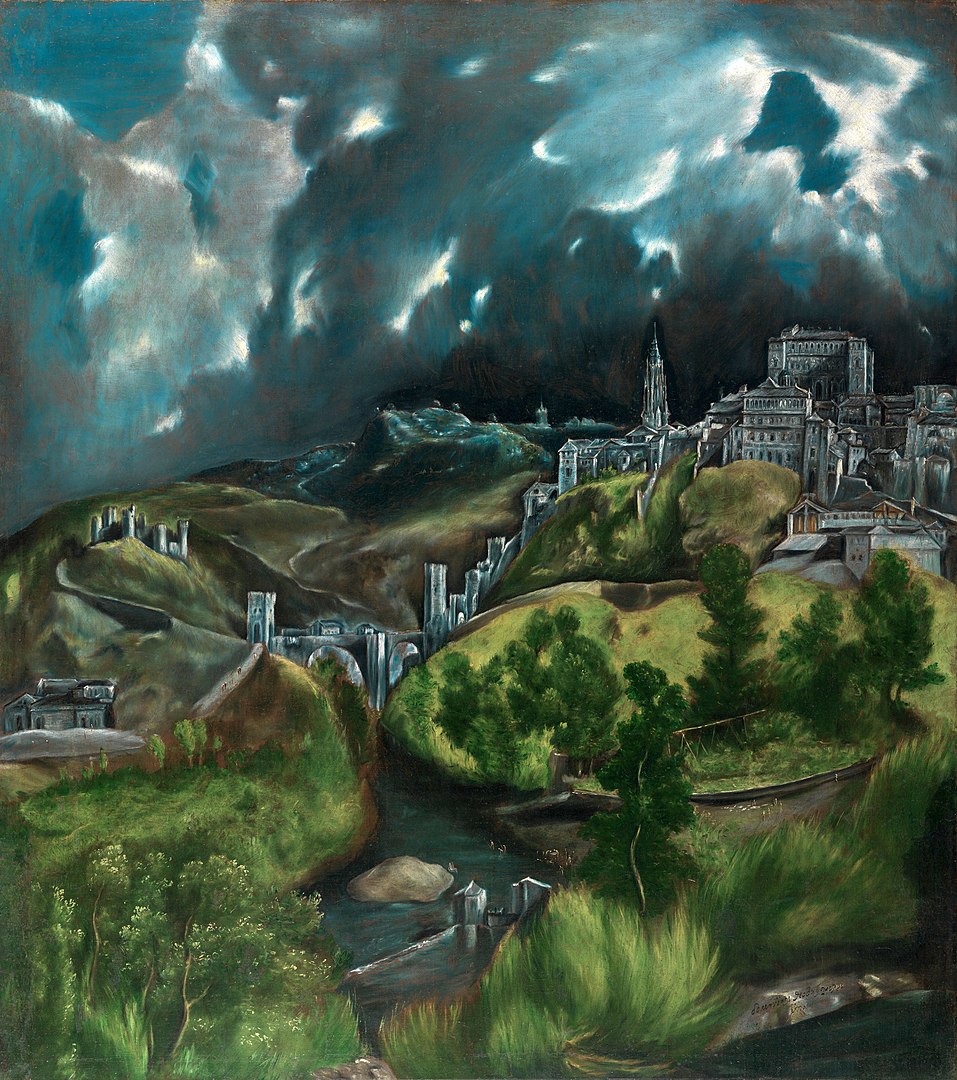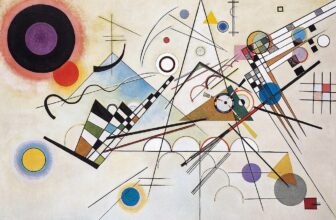
The Meaning Behind View of Toledo by El Greco
A Masterpiece of Mystery and Symbolism
El Greco’s View of Toledo is one of the most famous landscape paintings in Western art history. Painted around 1596–1600, this iconic work presents a dramatic and emotionally charged view of the Spanish city of Toledo. Known for his unique style that blends Byzantine traditions with Renaissance and Mannerist influences, El Greco (born Domenikos Theotokopoulos) infused View of Toledo with spiritual intensity, symbolic depth, and a visionary approach to landscape painting.
A Rare Example of a Pure Landscape
Unlike most paintings of the period, which focused on religious or mythological themes, View of Toledo is remarkable as one of the few surviving pure landscapes from the Renaissance era. Landscape painting was not yet considered a major genre at the time, making El Greco’s choice to dedicate an entire canvas to Toledo’s landscape particularly groundbreaking.
However, El Greco does not depict Toledo with the precise realism of later landscape painters like the Dutch masters. Instead, he interprets the city with a heightened sense of drama, using exaggerated forms, a brooding sky, and an eerie light that gives the work an almost supernatural quality.
Symbolism and Mysticism in View of Toledo
Scholars and art historians have long debated the deeper meaning of View of Toledo. While some argue that it is simply an observational landscape, others suggest that it carries profound religious and mystical symbolism.
1. A Spiritual City
Toledo was a deeply spiritual city, known as the religious heart of Spain. As the home of the Catholic Church’s Spanish headquarters, it was a hub of theological study and devotion. El Greco, who spent much of his life in Toledo, had a strong connection to the city and its religious significance.
Some scholars interpret the painting as a representation of Toledo as the “Heavenly Jerusalem,” a divine city on Earth. The way El Greco manipulates the city’s topography, shifting buildings from their real locations, suggests he was not merely painting what he saw but rather an idealized, almost otherworldly vision of the city.
2. Apocalyptic and Prophetic Undertones
The dramatic, stormy sky that looms over Toledo has led many to see View of Toledo as an apocalyptic vision. The swirling clouds, ominous darkness, and striking contrast between the illuminated city and its shadowy surroundings create a sense of impending doom or divine judgment. Given El Greco’s known fascination with religious themes, it is possible that the painting conveys a message about the transience of earthly cities compared to the eternal nature of the divine.
3. Influence of Mannerism and Personal Style
El Greco was a Mannerist painter, and View of Toledo exhibits many characteristics of the Mannerist movement: exaggerated forms, intense emotional expression, and an emphasis on dramatic contrasts. The way he elongates the buildings and distorts the natural landscape mirrors the elongated, almost ethereal figures seen in his religious paintings.
The color palette also plays a crucial role in creating the painting’s mood. The striking greens of the hills contrast sharply with the deep blues and blacks of the stormy sky. The bright white cathedral and Alcázar (fortress) stand out dramatically, reinforcing the painting’s religious and symbolic undertones.
Artistic Techniques and Composition
El Greco’s View of Toledo is notable for its unconventional approach to composition. Unlike the balanced, harmonious landscapes of later artists like Claude Lorrain or Poussin, this painting is asymmetrical, with the city dramatically positioned in the upper half of the canvas.
The sky takes up a significant portion of the painting, contributing to the overwhelming sense of nature’s power. The city appears almost as if it is emerging from the hills, with buildings stretching toward the heavens. This unique compositional choice reinforces the idea of Toledo as a sacred place, caught between the earthly and divine realms.
Another remarkable feature is El Greco’s use of light. The city is illuminated in an almost unnatural way, with certain buildings appearing to glow while others are cast in shadow. This use of light serves to highlight key elements of the city, particularly the Cathedral of Toledo, which is depicted in a nearly spectral manner.
Comparisons to Other Landscape Paintings
While View of Toledo is often seen as a precursor to later landscape traditions, it stands apart from other works of the time. Unlike the precise, observational landscapes of Dutch painters like Jacob van Ruisdael or the idyllic, idealized nature scenes of Claude Lorrain, El Greco’s Toledo is a landscape of emotion, symbolism, and spirituality.
His approach to landscape painting can also be compared to later Expressionist and Surrealist artists. Some art historians see echoes of View of Toledo in the swirling, distorted forms of Vincent van Gogh or the dreamlike, atmospheric qualities of Salvador Dalí. The painting’s intense use of color, light, and movement aligns it more with modern artistic movements than with its Renaissance contemporaries.
The Legacy of View of Toledo
El Greco’s View of Toledo remains a deeply influential work in the history of art. It stands as one of the earliest examples of landscape painting used to express emotion rather than mere observation. Its dramatic atmosphere, mysterious symbolism, and unique composition have captivated viewers for centuries.
The painting has also influenced countless artists beyond El Greco’s time. Modern painters like Edvard Munch, Pablo Picasso, and the German Expressionists found inspiration in its bold colors and distorted forms. Even in contemporary art, View of Toledo continues to be studied and admired for its groundbreaking approach to landscape and mood.
View of Toledo is a painting of a city, it is a profound meditation on spirituality, nature, and artistic vision. Whether interpreted as a mystical representation of Toledo, a warning of divine judgment, or simply an emotional response to the landscape, the painting stands as one of El Greco’s most enigmatic and powerful works.
Its impact on the art world endures, proving that even centuries after its creation, View of Toledo continues to inspire awe, debate, and admiration. Through its stormy skies and glowing cityscape, El Greco offers not just a view of Toledo but a glimpse into a world where art and spirituality intertwine, transcending time and place.





